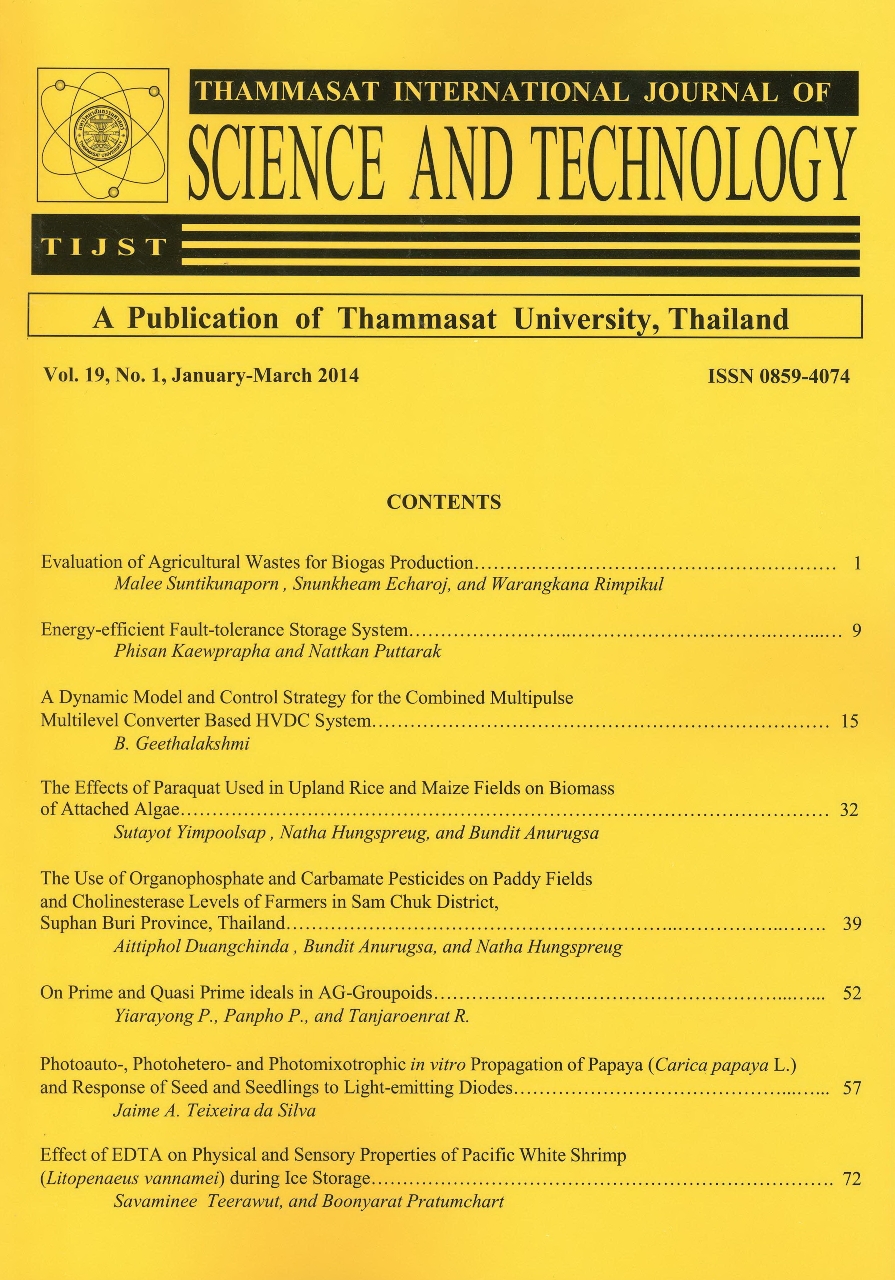Nutrients and Ruminal Digestibility of Baby Corn By-product Silages under Different Harvesting Methods
Keywords:
Baby corn stalk, Baby corn husk, Cutting height, Silage, Nutrient, Ruminal digestibility, Batch culture.Abstract
Abstract
The objective of this study was to determine nutrients and ruminal digestibility of silages from baby corn by-products. The experiment was assigned in Completely Randomized Design with 5 treatments and 4 replications. The treatments were silages under different harvesting method including baby corn stalks cut at 10, 40 and 70 cm height above ground, baby corn husk with and without silk. After 30 d ensiling, the silage samples were collected and analyzed for nutrients while ruminal digestibility was determined using Batch culture for 24 h incubation. Ruminal gas production was estimated in glass syringe for 24 h. The results showed that increasing in cutting height from 10 to 70 cm improved nutrients of silage by decreasing (P<0.05) ADF (39.73 vs. 43.22%DM), NDF (67.50 vs. 70.70%DM) and increasing (P<0.05) crude protein (11.60 vs. 10.16%DM), dry matter digestibility (40.13 vs. 37.25%), organic matter digestibility (36.79 vs. 33.16%), NDF digestibility (46.18 and 41.92%). The husk with silk silage had higher (P<0.05) crude protein (12.35 vs. 8.75%DM), NDF digestibility (53.87 and 46.52%) and lower (P<0.05) ADF (38.78 vs. 40.88%DM), and methane gas production (7.75 vs. 10.75 ml/200mg) than those husk without silk silage but had similar (P>0.05) NDF (72.38 and 71.93%DM), dry matter digestibility (44.79 and 45.25%DM), organic matter digestibility (42.26 and 43.36%). The methane gas production was the highest in the husk without silk silage whereas silages from different cutting stalks and silage from husk with silk produced a similar amount of the methane gas (7.25-8.0 ml/200mg; P>0.05). In conclusion, increase the stalk cutting height to 70 cm improved the silage quality by increasing nutrients and ruminal digestibility. Silage from baby corn husk with silk had higher nutrients and ruminal digestibility than baby corn stalk silages. Lowering dry matter loss of silage from baby corn husk with silk by reducing moisture prior to ensiling requires further investigation.
Keywords: Baby corn stalk; Baby corn husk; Cutting height; Silage; Nutrient; Ruminal digestibility; Batch culture.








